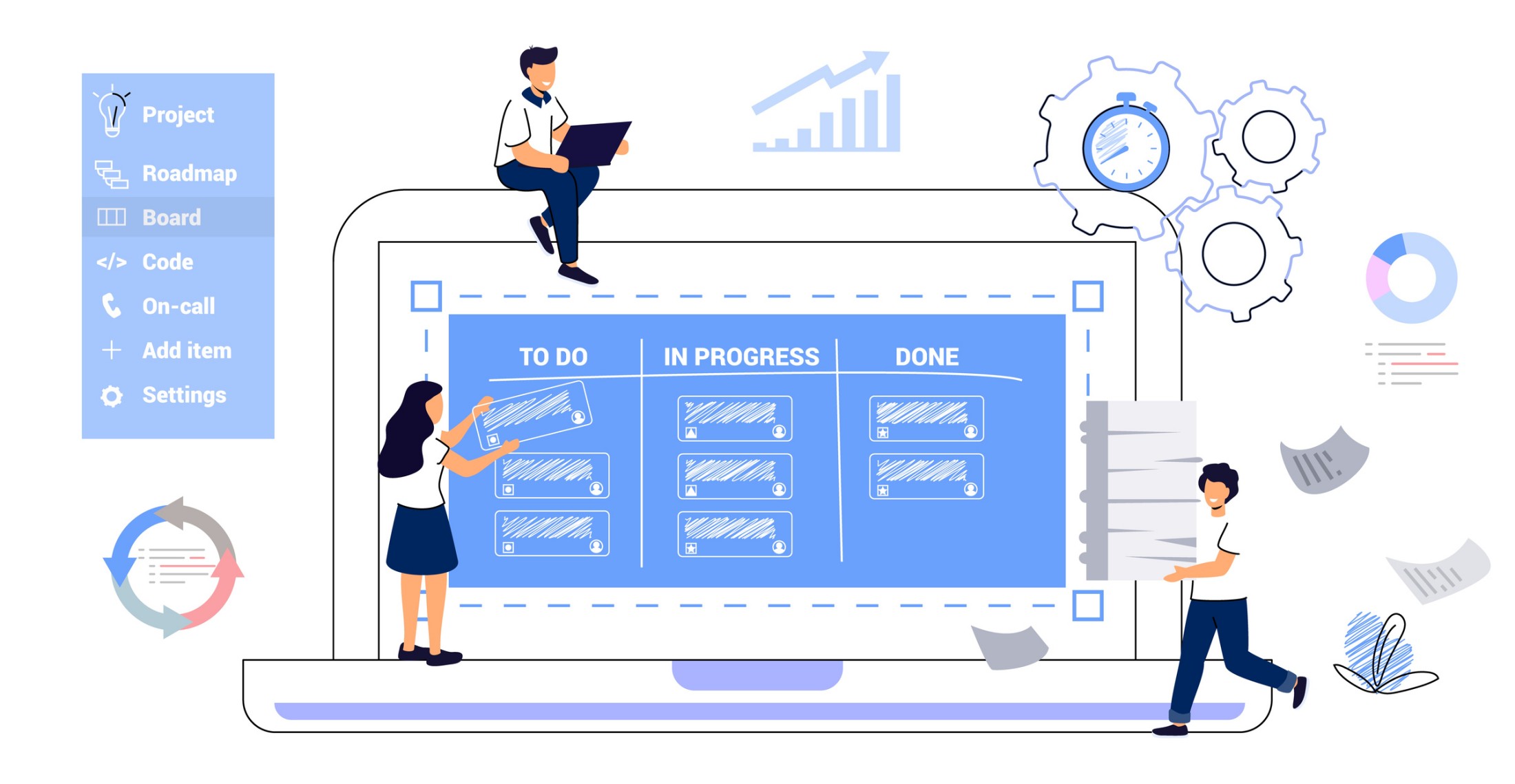A meticulously crafted website brief serves as the cornerstone of this communication, bridging the gap between a client's vision and a developer's execution. Such a document not only lays the groundwork for what is expected but also ensures that both parties are aligned in their objectives.
By focusing on the specifics and eliminating ambiguity, a website brief plays a pivotal role in making the development process more efficient and goal-oriented.
Basics of a Website Brief
At its essence, a website brief is a structured document that conveys the aspirations, objectives, and requirements of a web project. It offers a snapshot of what the client envisions and serves as a roadmap for developers to navigate the project's intricacies.
This foundational document is indispensable because it brings clarity and direction to the project, ensuring that everyone involved has a clear understanding of the goals and the means to achieve them. Without such clarity, projects can easily go off track, leading to wasted time, resources, and potential disagreements.
Key Elements of a Comprehensive Website Brief
Crafting a well-defined website brief requires a deep dive into various facets of a project. While every website is unique, there are universal components that, when addressed in the brief, provide a comprehensive guide for developers.
Project Overview
- Project goals and objectives
Clearly outline what you aim to achieve with the website. Whether it's increasing sales, improving user engagement, or establishing a brand presence, these goals set the direction for the entire project. - Target audience and their expectations
Identify the primary users of your website. Are they tech-savvy millennials, busy professionals, or seniors looking for information? Understanding their expectations ensures the site resonates with them and meets their needs.
Design and Aesthetics
- Preferred colour schemes and typography
Specify colours that align with your brand identity or desired aesthetics. Highlighting preferred fonts and typographic styles can further ensure brand consistency and appeal. - Inspirations or examples of desired design
Sharing websites or designs that you admire can give developers a clear visual cue. It helps in setting a design benchmark and provides a starting point for creativity.
Functional Requirements
- Specific features and functionalities
Do you need a shopping cart? A booking system? A gallery? Enumerate the features that are essential for your site's operations and user experience. - Desired user interactions
Detail how you want visitors to interact with your website. This could range from filling out contact forms to interacting with dynamic content.
Content Specifications
- Types of content (blogs, videos, product descriptions)
Determine the different kinds of content that will populate your site. Each type has its design and functional implications. - Tone of voice and style guidelines
Are you aiming for a professional tone or a more casual, conversational style? Setting this tone ensures consistent communication across your website.
Technical Requirements
- Platforms and integrations
Highlight any third-party platforms that must be integrated, such as email marketing software, CRM systems, or payment gateways. - Preferred Content Management System (CMS)
Do you have a preference for WordPress, Joomla, and Drupal, or any other CMS? Your choice here can influence various aspects of the development process.
Setting Clear Timelines and Budgets
Establishing realistic timelines and budgets at the onset ensures a smooth development process and reduces potential misunderstandings. Both factors are critical in keeping the project on track and within the specified financial scope:
- Project milestones
Break down the development process into significant chunks or phases. These milestones, such as the design phase, development phase, testing phase, etc., help monitor progress and ensure that every aspect of the website is given adequate attention. - Anticipated launch date
Set a clear target for when you aim to go live with the website. This not only provides a deadline to work towards but also allows for any promotional or launch-related activities to be planned in advance.
Communicating Preferences and Restrictions
Every project comes with its unique set of preferences and constraints. Clearly articulating these can prevent future pitfalls and align the developers with your vision:
- Any particular technologies or platforms to use or avoid
Whether it's a preference for a particular programming language or avoiding a specific plugin, communicate these choices clearly. This helps the development team in choosing the right tools for the project. - SEO and accessibility considerations
Outline your priorities in terms of search engine optimization and website accessibility. Ensuring your site is both visible on search engines and accessible to all users can significantly enhance its reach and impact.
Importance of Feedback Loops
Feedback loops play a pivotal role in the web development journey. By ensuring that the project consistently aligns with the intended vision, they provide an opportunity for real-time refinements.
One crucial aspect of feedback is its role in iterative development. With a focus on constructing the website in segments and making improvements based on real-time feedback, iterative development guarantees that the end product aligns closely with both the project's vision and the needs of its users.
To optimize this process, it's essential to establish routine check-ins and review sessions with the development team. Such meetings not only promote transparency and maintain project momentum, but they also foster a spirit of collaboration, ensuring that every team member is on the same page and working towards a shared goal.
Tips for Enhancing the Effectiveness of Your Website Brief
To ensure your website brief is as effective as possible, it's crucial to foster clarity, collaboration, and inclusivity. This will not only pave the way for smoother development but also lead to a product that meets or exceeds expectations:
- Keeping the language clear and jargon-free
While you might be familiar with industry-specific terms, it's essential to remember that not all stakeholders may have the same knowledge base. Using simple and straightforward language ensures that everyone is on the same page, reducing the chances of misinterpretation. - Encouraging collaboration and input from all stakeholders
A website is often the product of many minds. By inviting feedback and insights from all involved parties, whether it's marketing, sales, design, or content teams, you ensure a well-rounded and comprehensive brief that covers all aspects.
How a Well-Defined Website Brief Reduces Development Time
A comprehensive website brief is not just a roadmap for developers but also a catalyst for efficiency. Armed with a transparent direction, developers can streamline their efforts, which translates to expedited results and diminished roadblocks.
One major benefit of a lucid brief is its direct impact on the pace of development. When the team possesses an unambiguous grasp of the project's aspirations and detailed requisites, it allows for a fluid workflow, notably curtailing the overall development duration.
Moreover, a vague or unclear brief can usher in instances of redundant work or substantial modifications.
By contrast, a meticulously crafted website brief eradicates such grey areas, ensuring that the project's trajectory remains true to its intended path from the start, thereby reducing the need for laborious tweaks down the line.
Finalizing and Reviewing Your Brief
Creating the perfect website brief isn't a one-person job. It's an iterative process, and it often benefits immensely from the perspectives of various team members. Before you consider your brief finalized, review and refine it.
Even the most meticulous planner can miss details or view things from a limited perspective. By inviting various team members to review the brief—each with their own unique expertise and perspective—you maximize the chance of catching any oversights and enhancing the brief's overall quality.
Once feedback starts pouring in, it's essential to remain open to changes. Some suggestions can lead to significant improvements in the brief, ensuring that the final document is as comprehensive and effective as possible.
Crafting a comprehensive website brief is more than just a preparatory step; it's the foundation upon which the entire development process rests. Such a brief ensures clarity of vision, minimizes errors, and streamlines the development, leading to a smoother and more efficient project journey.
For anyone gearing up for a new website project, investing time and effort into creating a detailed brief isn't just recommended; it's paramount for achieving successful outcomes.




